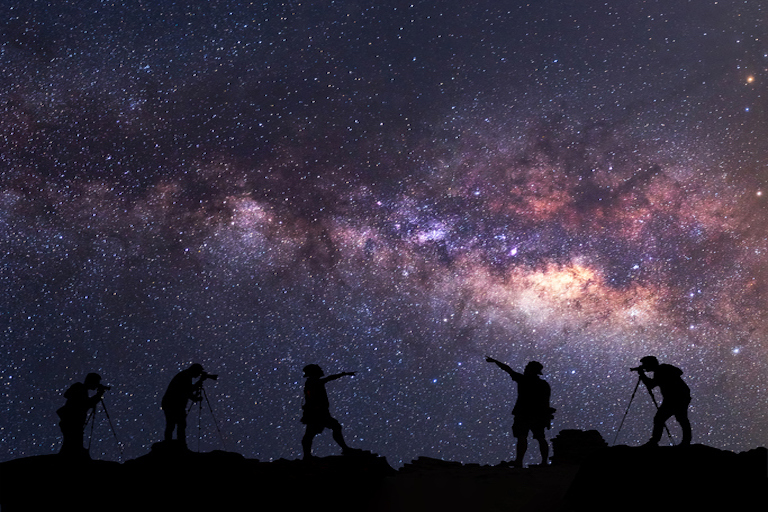Last year’s calendar was full of many magical cosmic events. The year 2020 gave us 6 eclipses, 2 solar eclipses, and 4 lunar eclipses. Despite being the worst year of the decade, it has at least brought us few memorable eye-catching, night sky events. We were lucky enough to encounter amazing cosmic spectacles such as a total solar eclipse, the Halloween blue moon, the Geminid meteor shower, and the ‘Christmas Star’ conjunction between Jupiter and Saturn, to name a few.
However, not all the night sky enthusiasts were able to see these beauties in real life due to their different geographical location and weather conditions. Most of them are able to see such events only on the internet.
Advertisement
For the ones who are always looking forward to watching heavenly delights in the year 2021, here we bring a list of top 10 astronomical events. There are a number of events that happen every now and then, but only a few of them make the Earth’s sky a little prettier.
On February 11: Venus-Jupiter Conjunction
Only early risers will be able to get a glimpse of Venus and Jupiter, the two brightest planets in our skies. Best time to observe the planets is just 20 to 30 minutes before sunrise. People living in the southern hemisphere will have the opportunity to see the event.
On March 9 and 10: Quadruple Formation
The sky-watchers will get the opportunity to observe a cosmic huddle around the globe. The four planets–Mercury, Jupiter, and Saturn will appear to be forming an alignment, while the nearby crescent moon will frame the trio of planets. Those who can use binoculars will be able to spot Jupiter’s four largest moons, whereas a small telescope can reveal rings of Saturn.
On May 26: “Blood moon”, A Total Lunar Eclipse
The moon will undergo a total lunar eclipse. People living in western North America, western South America, Australia, and Southeast Asia will be able to witness the moon blush red. This event happens when the sun, Earth, and moon are aligned so that the Earth’s shadow completely blankets the moon’s face.
On June 10: the “Ring of Fire” Solar Eclipse
People living near Canada, Russia, and Greenland will be lucky to see the “ring of fire” eclipse with the sunrise. This eclipse is also known as an annular solar eclipse, it happens when the three bodies, the moon, sun, and Earth are in one line so that the lunar disk is too small to cover the entire sun, creating a ring of light around the dark lunar silhouette.
On July 12: Venus-Mars Conjunction
The three celestial bodies, Venus, Mars, and the moon will be making an eye-catching photo opportunity. Mars and Venus will be so close to the earth, that they will be visible clearly with unaided eyes.
On August 12 and 13: Perseid Meteor Shower Peaks
Every year in the midst of August month, Earth travels through a cloud of debris shed by the comet Swift–Tuttle. This produces a flurry of shooting stars in the skies. This is the Perseid meteor shower, and it can produce up to 60 shooting stars an hour in a typical year. According to scientists, 2021 will be a great year for the Perseids because the shower’s peak coincides with a dark, moonless sky.
On August 18: Mars-Mercury conjunction
Same as the conjunction of Venus and Jupiter that will take place in the month of February, the innermost planet of the solar system, Mercury and Mars will create a close encounter. This conjunction will be a bit difficult to observe as of its close proximity to the setting sun. You probably would require a pair of binoculars or a telescope to watch this dramatic conjunction.
On October 8: A Draconid Meteor Shower
The Draco, the dragon constellation will be at its highest point in the sky around midnight throughout the Northern Hemisphere, which will be the best time to watch the shower. This shower will be less dramatic than August’s Perseid shower. The dragon’s shooting stars are easy to spot because they are some of the slowest moving of any annual shower.
On November 19: A Partial Lunar Eclipse
The last lunar eclipse of the year 2021 will greet us across Australia, North and South America, and parts of Europe and Asia. The partial lunar eclipse is almost like a total eclipse. The event may cast some orange and red hues on our closest cosmic neighbor. The event will peak at 2:02 a.m. MT.
On December 4: A Total Solar Eclipse
The total solar eclipse will unfold across Antarctica. Meanwhile, a partial eclipse “a bite taken out of the sun” will be visible across parts of Argentina, Chile, South Africa, Namibia, and Australia. To experience a few minutes of daytime darkness, eclipse-chasers will travel to head to the path of totality near the South Orkney Islands.









